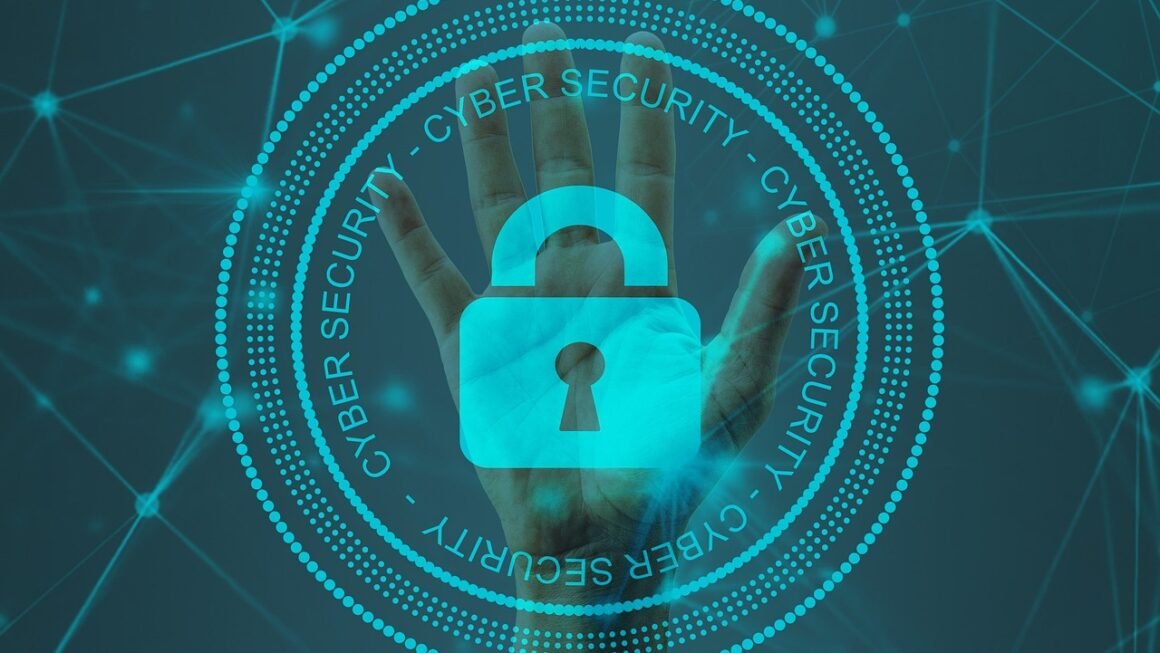Cyberattacks are no longer a question of “if,” but “when.” In today’s digital landscape, organizations face an increasingly sophisticated and relentless barrage of cyber threats, ranging from ransomware and phishing scams to data breaches and supply chain attacks. Traditional cybersecurity measures, focused solely on prevention, are no longer sufficient. To truly thrive and survive, businesses need to cultivate cyber resilience: the ability to not only prevent attacks but also to withstand, recover from, and adapt to adverse cyber events. This blog post will explore the core principles of cyber resilience, providing actionable insights and strategies for building a robust defense against the ever-evolving threat landscape.
Understanding Cyber Resilience
What is Cyber Resilience?
Cyber resilience goes beyond traditional cybersecurity by encompassing a holistic approach to managing cyber risks. It’s about ensuring business continuity and minimizing the impact of cyberattacks through:
- Prevention: Implementing proactive security measures to reduce the likelihood of attacks.
- Protection: Employing technologies and processes to defend against attacks.
- Detection: Quickly identifying and alerting security teams to malicious activity.
- Response: Having well-defined plans and procedures to contain and eradicate attacks.
- Recovery: Restoring systems, data, and operations to a normal state after an incident.
- Adaptation: Learning from past incidents and continuously improving security posture.
Why is Cyber Resilience Important?
Cyber resilience offers several crucial benefits for organizations:
- Reduced Business Disruption: Minimizes downtime and financial losses resulting from cyberattacks.
- Enhanced Reputation: Protects brand image and customer trust.
- Improved Compliance: Meets regulatory requirements and industry standards.
- Better Risk Management: Provides a framework for identifying, assessing, and mitigating cyber risks.
- Faster Recovery: Enables organizations to quickly bounce back from incidents.
- Increased Competitive Advantage: Demonstrates a commitment to security, which can be a differentiator in the marketplace. According to a 2023 IBM report, the average cost of a data breach is $4.45 million, highlighting the significant financial impact that cyber resilience can mitigate.
The Difference Between Cybersecurity and Cyber Resilience
While cybersecurity focuses primarily on preventing attacks, cyber resilience takes a broader view. Think of cybersecurity as building a high fence around your property, while cyber resilience is like having an emergency plan, insurance, and the ability to rebuild if the fence is breached. Cybersecurity is a component of cyber resilience, but it’s not the whole picture.
Building a Cyber Resilience Framework
Risk Assessment and Management
A comprehensive risk assessment is the foundation of any cyber resilience framework. This involves:
- Identifying Assets: Determining the organization’s critical assets, including data, systems, and infrastructure.
- Identifying Threats: Assessing potential cyber threats, such as malware, ransomware, phishing, and insider threats.
- Assessing Vulnerabilities: Identifying weaknesses in systems and processes that could be exploited by attackers.
- Determining Impact: Evaluating the potential impact of a successful cyberattack on the organization.
- Prioritizing Risks: Ranking risks based on their likelihood and impact.
- Developing Mitigation Strategies: Implementing security controls and processes to reduce or eliminate identified risks. For example, if a vulnerability scan reveals outdated software, the mitigation strategy would involve patching or upgrading the software.
Incident Response Planning
An incident response plan (IRP) outlines the steps to be taken in the event of a cyberattack. A well-defined IRP should include:
- Roles and Responsibilities: Clearly defined roles and responsibilities for incident response team members.
- Communication Plan: Procedures for communicating with internal and external stakeholders during an incident.
- Incident Detection and Analysis: Methods for identifying and analyzing potential incidents.
- Containment, Eradication, and Recovery: Steps for containing the spread of an attack, eradicating malware, and recovering systems and data.
- Post-Incident Activity: Procedures for documenting the incident, conducting a post-mortem analysis, and implementing lessons learned. Consider a tabletop exercise to test the IRP and identify any gaps or weaknesses.
Data Backup and Recovery
Regular data backups are essential for ensuring business continuity in the event of a data breach or other disaster.
- Backup Strategy: Develop a comprehensive backup strategy that includes regularly backing up critical data and systems. Implement the 3-2-1 rule: 3 copies of your data, on 2 different media, with 1 copy offsite.
- Backup Verification: Regularly test backups to ensure they are working properly and can be restored quickly.
- Recovery Time Objective (RTO): Define the maximum acceptable downtime for critical systems and applications.
- Recovery Point Objective (RPO): Determine the maximum acceptable data loss in the event of an incident. Cloud-based backup and disaster recovery solutions can provide faster recovery times and improved scalability.
Strengthening Your Defenses
Implementing Security Controls
Implementing robust security controls is crucial for preventing and mitigating cyberattacks. Key security controls include:
- Firewalls: To control network traffic and prevent unauthorized access.
- Intrusion Detection/Prevention Systems (IDS/IPS): To detect and block malicious activity.
- Antivirus and Antimalware Software: To protect against malware infections.
- Endpoint Detection and Response (EDR): To monitor endpoints for suspicious behavior and respond to threats.
- Multi-Factor Authentication (MFA): To add an extra layer of security to user accounts.
- Data Loss Prevention (DLP): To prevent sensitive data from leaving the organization.
- Vulnerability Management: To regularly scan for and remediate vulnerabilities. Many organizations now use Security Information and Event Management (SIEM) systems to centralize security logs and alerts.
Employee Training and Awareness
Employees are often the weakest link in the security chain. Comprehensive training and awareness programs are essential for educating employees about cyber threats and how to avoid them.
- Phishing Simulations: Conduct regular phishing simulations to test employees’ ability to identify and report phishing emails.
- Security Awareness Training: Provide training on topics such as password security, social engineering, malware, and data protection.
- Security Policies and Procedures: Communicate security policies and procedures clearly to employees.
- Ongoing Education: Provide ongoing education and updates to keep employees informed about the latest cyber threats. For example, implement a “lunch and learn” session each month to cover different security topics.
Secure Supply Chain Management
Supply chain attacks are on the rise, making it essential to assess the security posture of third-party vendors.
- Vendor Risk Assessment: Conduct thorough risk assessments of all third-party vendors.
- Security Requirements: Establish clear security requirements for vendors and ensure they are contractually obligated to meet those requirements.
- Security Audits: Conduct regular security audits of vendors to ensure they are maintaining adequate security controls.
- Incident Response Planning: Develop a plan for responding to security incidents involving vendors. Consider using a framework such as NIST’s Cybersecurity Supply Chain Risk Management (C-SCRM).
Adapting to the Evolving Threat Landscape
Continuous Monitoring and Improvement
Cyber resilience is an ongoing process, not a one-time project. Organizations need to continuously monitor their security posture, identify areas for improvement, and adapt to the evolving threat landscape.
- Security Metrics: Establish key performance indicators (KPIs) to measure the effectiveness of security controls.
- Regular Assessments: Conduct regular security assessments, such as penetration testing and vulnerability scanning.
- Threat Intelligence: Stay informed about the latest cyber threats and vulnerabilities.
- Feedback Loops: Establish feedback loops to gather input from employees, vendors, and other stakeholders.
Leveraging Automation and AI
Automation and artificial intelligence (AI) can significantly enhance cyber resilience by:
- Automating Security Tasks: Automating tasks such as vulnerability scanning, patch management, and incident response.
- Detecting Anomalies: Using AI to detect anomalies and suspicious behavior that may indicate a cyberattack.
- Improving Threat Intelligence: Leveraging AI to analyze threat intelligence data and identify emerging threats.
- Enhancing Incident Response: Using AI to automate incident response tasks and improve the speed and effectiveness of incident response. For example, AI-powered security tools can automatically isolate infected systems and block malicious traffic.
Conclusion
Building cyber resilience is an essential investment for any organization seeking to thrive in today’s threat-filled environment. By understanding the core principles, implementing robust security controls, and continuously adapting to the evolving threat landscape, businesses can significantly reduce their risk of cyberattacks and minimize the impact of any successful breaches. Cyber resilience is not just about protecting your data; it’s about protecting your business, your reputation, and your future. Investing in cyber resilience is an investment in long-term success.



